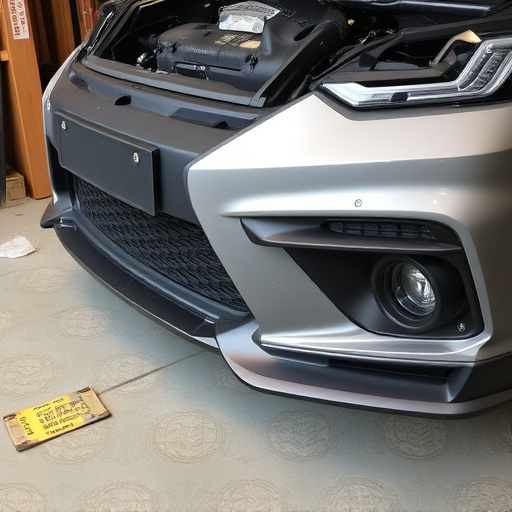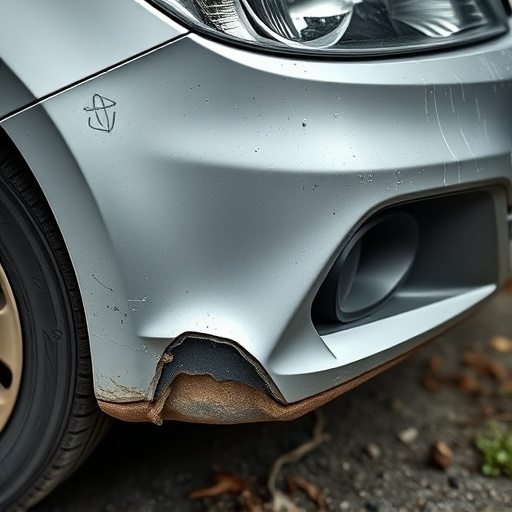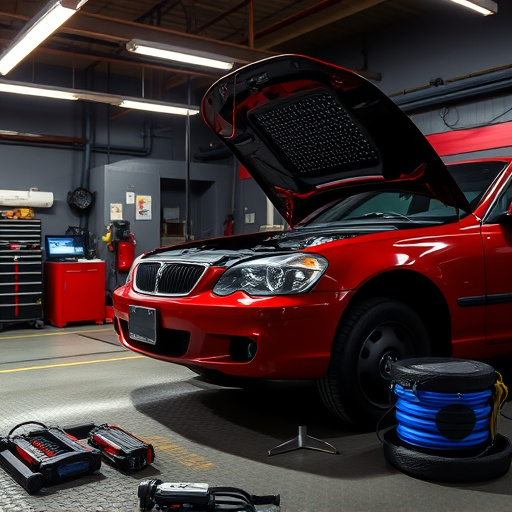Multi-angle structural pulls are key for maintaining car body integrity and aesthetics, with electronic measuring systems offering unprecedented accuracy in dent repair and auto body restoration. These tools provide real-time data, enabling precise adjustments on modern cars with intricate designs. By ensuring visual appeal and structural soundness, these systems enhance safety, performance, and repair quality, while streamlining processes and reducing costs.
In today’s construction landscape, understanding multi-angle structural pulls is paramount for ensuring structural integrity and safety. This article delves into the significance of these complex forces and explores how electronic measuring systems (EMS) are revolutionizing their assessment. EMS provide unparalleled precision by accurately capturing and analyzing multi-angle data, enabling more informed decision-making and enhanced construction practices. By leveraging this technology, the industry can achieve new levels of efficiency and structural excellence.
- Understanding Multi-Angle Structural Pulls and Their Importance
- The Role of Electronic Measuring Systems in Enhancing Precision
- Benefits and Applications: Revolutionizing Construction Practices
Understanding Multi-Angle Structural Pulls and Their Importance

Multi-angle structural pulls are a complex yet crucial aspect of automotive body work, involving precise measurements and adjustments to ensure vehicles maintain their structural integrity and aesthetic appeal. This specialized technique goes beyond simple straight-line repairs, addressing car dent repair or auto body restoration by considering multiple angles and planes within the vehicle’s frame. Each angle plays a vital role in maintaining the overall stability and safety of the vehicle, from the curves of a fender to the intricate alignments of the chassis.
The significance of multi-angle pulls lies in their ability to restore vehicles to their original factory specifications, ensuring they perform optimally on the road. An electronic measuring system becomes an indispensable tool in this process, providing accurate data and enabling professionals in automotive body shops to make informed decisions. These systems facilitate precise measurements, allowing for exact adjustments that are often challenging to achieve with traditional methods, especially when dealing with modern car models featuring intricate designs and advanced materials.
The Role of Electronic Measuring Systems in Enhancing Precision

In today’s precision-driven automotive industry, electronic measuring systems have emerged as indispensable tools for achieving unparalleled accuracy in multi-angle structural pulls, a process pivotal to various tasks such as fender repair and car body restoration. These advanced systems transcend traditional measurement methods by offering real-time data and highly detailed insights into the vehicle’s dimensional integrity. This capability is particularly crucial during dent removal procedures, where even the slightest misalignment can compromise the overall aesthetics and structural soundness of the vehicle.
The integration of electronic measuring systems enables technicians to meticulously map out and monitor changes in a car’s body panels, ensuring that repairs are not just visually appealing but also structurally intact. This level of precision is vital for maintaining the vehicle’s original design intent and enhancing its overall safety and performance. Moreover, by facilitating faster and more accurate measurements, these systems streamline the repair process, ultimately reducing costs and expediting turnaround times in car body restoration projects.
Benefits and Applications: Revolutionizing Construction Practices

The introduction of electronic measuring systems has revolutionized construction practices, bringing about significant benefits that traditional methods cannot match. These advanced tools offer unparalleled accuracy and precision in multi-angle structural pulls, ensuring every measurement is taken with meticulous care. By providing real-time data and instant feedback, they enable construction professionals to make informed decisions on the fly, leading to enhanced efficiency and reduced errors on site.
This technology’s versatility extends far beyond initial applications in construction. Just as electronic measuring systems transform precision work in building, they also hold immense potential in other sectors, such as automotive repair and car paint services. In a collision repair center, for instance, these systems ensure precise alignment of components during the restoration process, ultimately enhancing the quality of repairs and customer satisfaction.
Electronic measuring systems have emerged as indispensable tools in the realm of multi-angle structural pulls, offering unparalleled precision and enhancing construction practices significantly. By accurately capturing data from various angles, these systems enable engineers and builders to make informed decisions, ensuring structural integrity and efficiency. This technology is revolutionizing the industry, paving the way for more sophisticated and safer constructions.














